MENUMENU
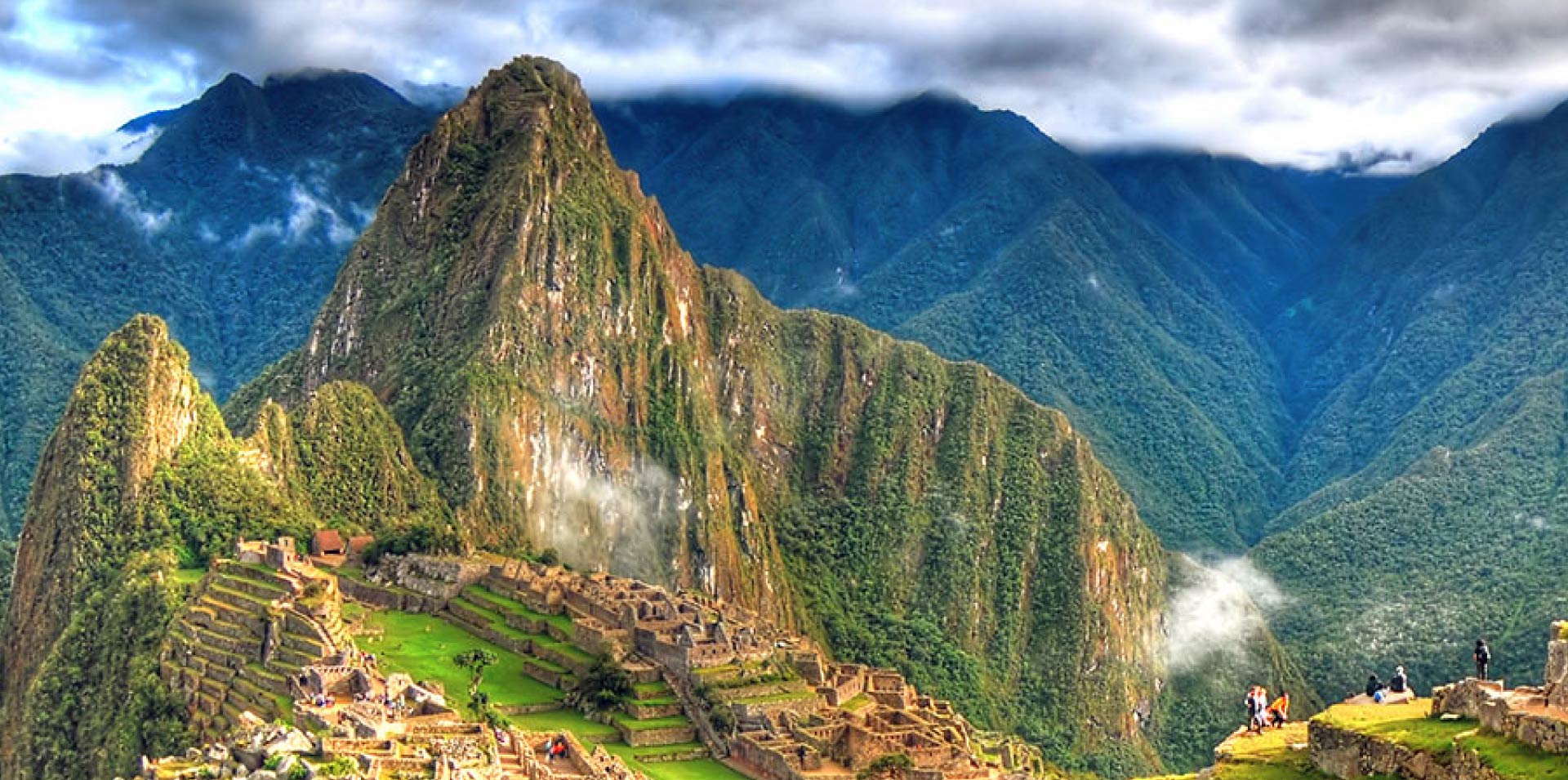
Reading time: 8 mins
When thinking about Peru’s most remarkable destinations, what immediately comes to mind are the ancient ruins of Machu Picchu and the nearby attractions like Sacred Valley and Cusco. In addition to these, consider another wonderful Peruvian destination, Lake Titicaca (or Lago Titicaca, as it is referred to in Spanish).
You may also like: Everything You Need to Know About Peru
This impressive body of water is not just the largest navigable freshwater lake in South America, it is also the highest. In addition to the colorful images of its popular floating islands and photogenic reed boats, this destination holds great cultural, historical, and ecological significance.
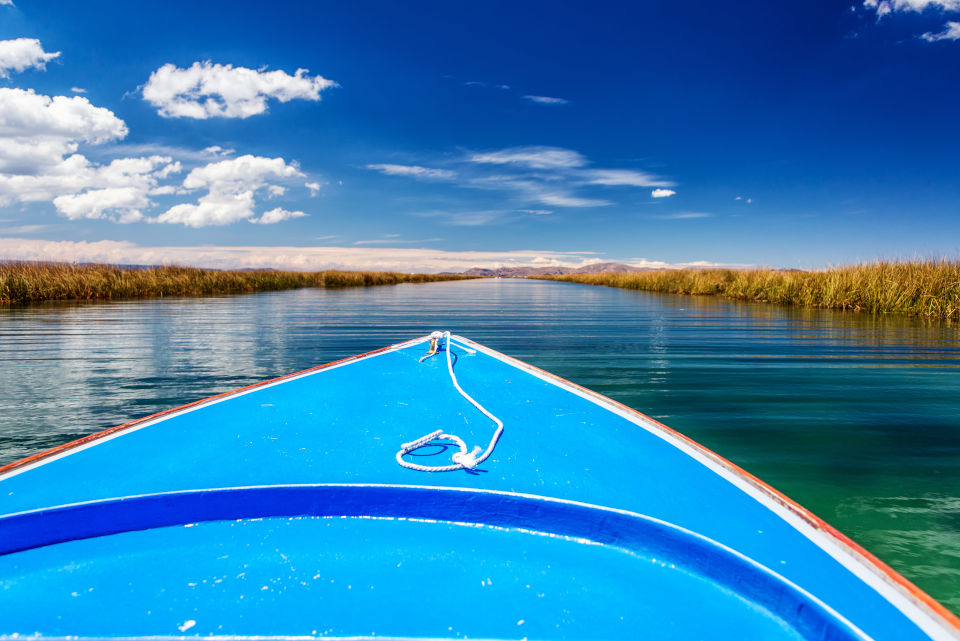
Boat sailing in the Titicaca Lake
Lake Titicaca is located in the Andean Mountains of South America. It straddles the border between Peru and Bolivia at an altitude of 12,507 feet (3,812 meters) above sea level. Though there are other smaller bodies of water in various states of evaporation, Lake Titicaca is the highest freshwater lake in the world (of substantial size) and the largest in South America.
This region is known as the Altiplano Basin, a large plateau that extends over 59,528 sq mi (154,176 sq km). Lake Titicaca is nestled in the gap between the eastern and western mountain ranges of the Andes. The slight crescent shape of the basin extends diagonally in a southeasterly direction. The lake occupies the northwestern tip of the altiplano.
Lake Titicaca is one of the Earth’s ancient lakes. (There are fewer than 20 remaining.) This place was home to the earliest Andean societies. These included the Pukara, Tiwanaku, and Colla Lupaka. Many historians identify this lake as the origin point of the Inca Empire.
Recently, a team of archeologists from all over the world discovered the remains of a temple and other village structures beneath the lake’s surface. These are thought to have been built by the Tiwanaku around 500 A.D. Divers involved in this archeological exploration also uncovered the remains of a retaining wall measuring around 2,625 feet (800 meters) in length.
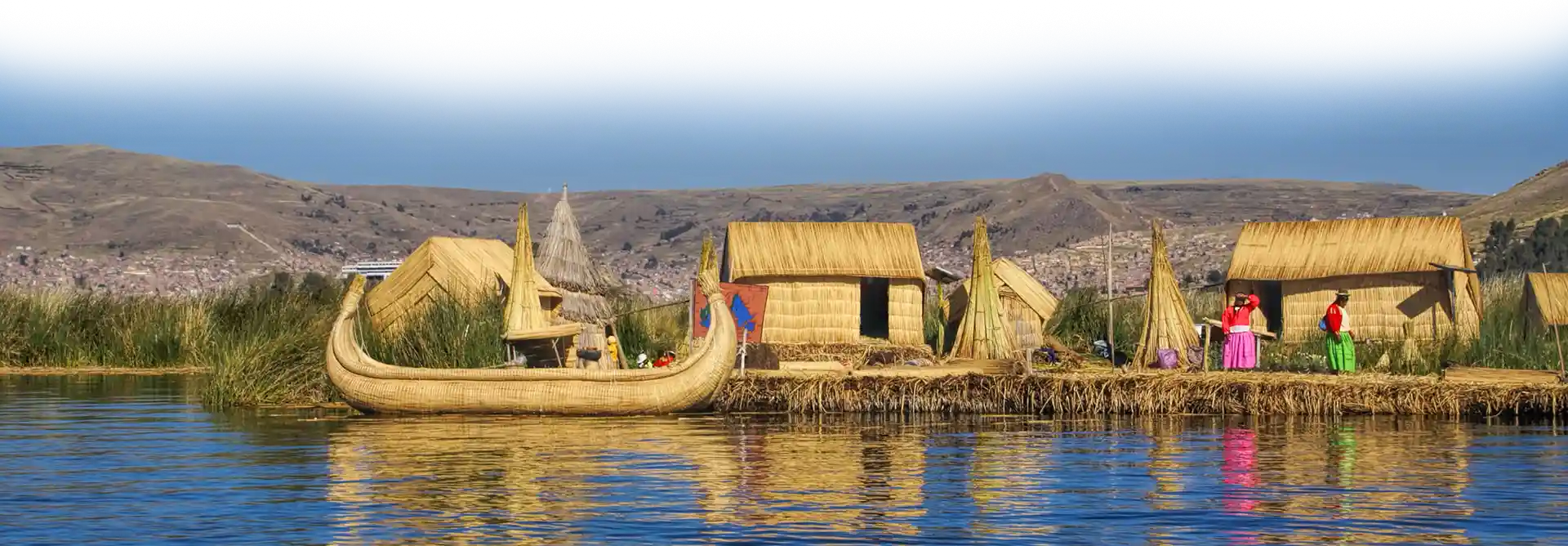
Floating island of the Uros community in Lake Titicaca
The island of Taquile served as a prison colony during the Spanish colonial period. It was officially handed over to the Taquile people in 1970. This island, like many others here, is host to the remains of several pre-Inca societies. The island’s highest point is where you’ll find them.
Taquile is also well known for its knitted textiles. This artform is practiced exclusively by the male population. Boys begin learning this craft at 8 years old. UNESCO regards the Taquileño’s textiles as “Masterpieces of the Oral and Intangible Heritage of Humanity”.
Similarly, on nearby Amantani, the tiny island’s two peaks called Pachamama (Mother Earth) and Pachatata (Father Earth) are where you’ll find more ancient ruins. Incidentally, visitors can arrange overnight homestays with some local families.
When visiting Amantani, islanders perform traditional dances for guests in the evenings. Tourists are encouraged to pick up supplies to bring to their hosts. These include things like rice, grains, cooking oil, and candles. Tourism agents will relay these and other details when arranging this type of travel experience.
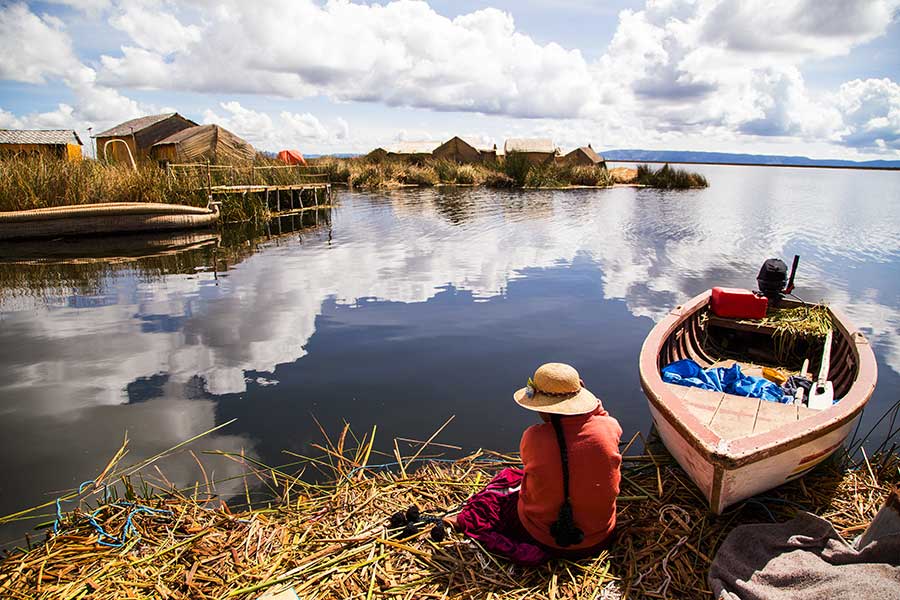
Uros community in Lake Titicaca
Whether on land, or on water, visitors to Lake Titicaca can enjoy many attractions and points of interest. As noted above, the lake’s popular floating islands are a main attraction. Artistic and cultural celebrations (including dance) are another highlight. And if you like colorful handicrafts—including popular and functional styles of headwear, like the frequently seen bowler or derby hats, the Taquile knitted men’s hat, and large straw hats—, this region will not disappoint!
One of the most photographed aspects of Lake Titicaca is its curious and fascinating watercraft made from totora reeds, the same material used to make and preserve the floating islands of the Uros tribe. These are located just off the western shore, in the Bay of Puno.
The Uros tribe is known for its remarkable adaptability. Legend has it that the original Uros were superior beings. They even predated the sun and could not drown. However, when they began mixing with humans, they lost these unique qualities. Eventually, they would lose much of their traditions, including their tongue and their identity.
The Uro-Aymara are the Uros of today. The ingenuity of their floating islands, built upon stacks of totora reeds (like cattails), is quite impressive. The reeds are frequently replenished and reinforced. The islands vary in size and additional ones are created when needed. Tribuna is the largest of these floating islands.
Visitors must take care when walking upon them. Their surface is rather uneven and taking one false step can be precarious. A wet foot can feel quite cold in this brisk weather.
The Uros tribe are quite savvy fishermen and quite talented artisans. Their population numbers around 2,000. Their often-photographed reed boats typically boast the visage or shape of an animal. Also, the variety of detailed handicrafts produced by the Uros attract a fair price.
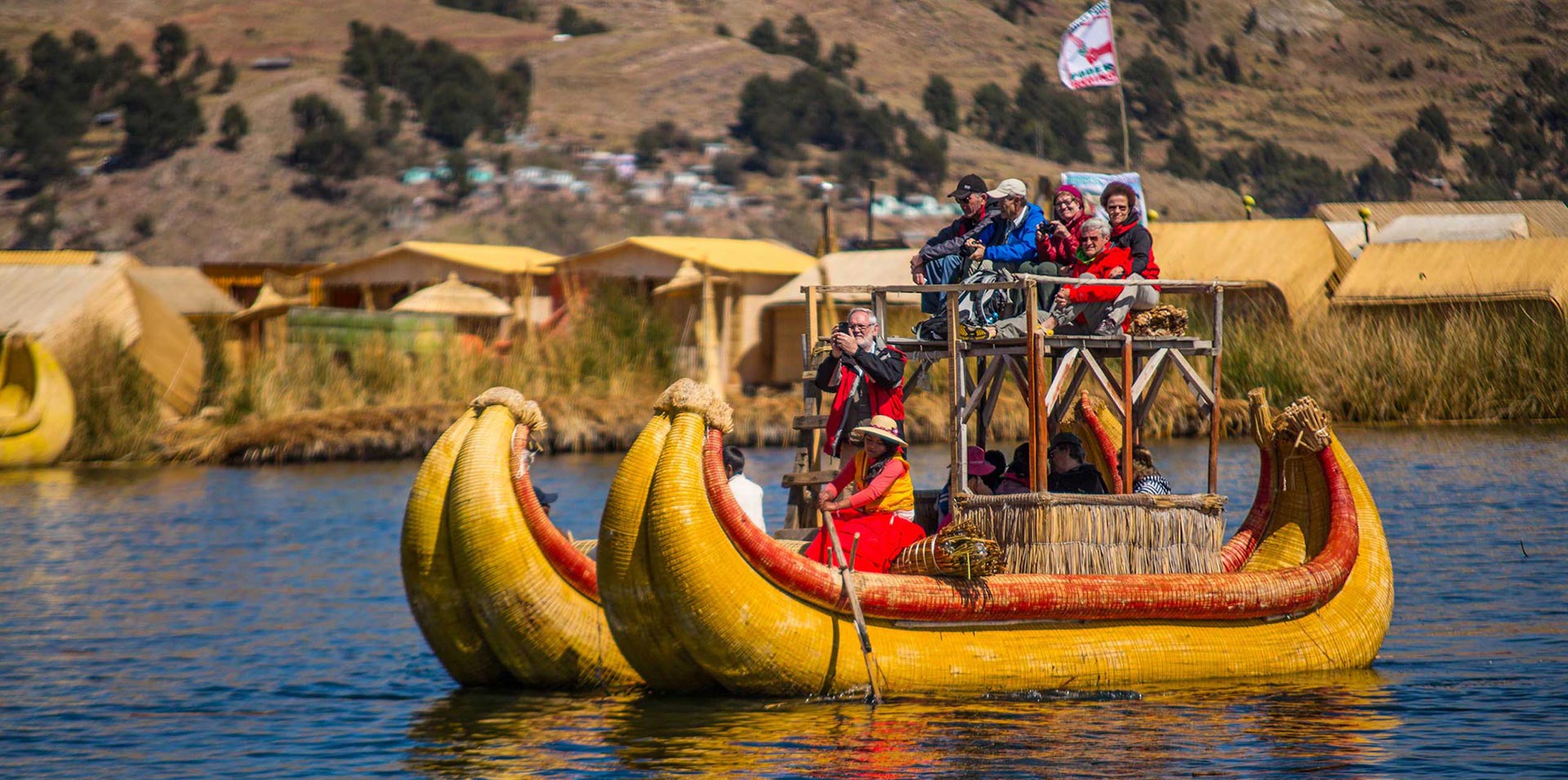
Sailing to Uros Island in Lake Titicaca, Peru
So, when visiting the region, Puno, on the lake’s western shore, is most conveniently situated for day trips and lake tours to the floating islands. The city itself is a bustling town with plenty of hotels, restaurants, artistic, historical, and cultural attractions.
Some of the notable and interesting attractions include:
So, how does one Travel to Lake Titicaca? Considering the very high elevation of Lake Titicaca, you’ll want to adapt to the altitude over the course of several days. This is where visiting other destinations at lower altitudes first and gradually making your way up to Lake Titicaca is a splendid idea.
We recommend starting your travels in the capital city of Lima, where you can explore the tremendous cuisine and touristic sites of this coastal metropolis. From there, we recommend heading up to Sacred Valley by plane. You’ll fly into Cuzco and immediately descend to the slightly lower Sacred Valley. Spend a couple of days exploring ancient ruins before culminating your stay with a visit to the must-see Machu Picchu.
From there, a memorable train ride back to Cuzco, with perhaps an overnight and early morning day tour, will get you ready for a short flight to the city of Juliaca, about an hour’s drive from Puno by car. Conversely, there are a couple of rail options (Andean Explorer and PeruRail) that depart from Cuzco. Travel by train takes about ten hours to reach the lake. Of course, this is a scenic option and one that can make for a fascinating experience.
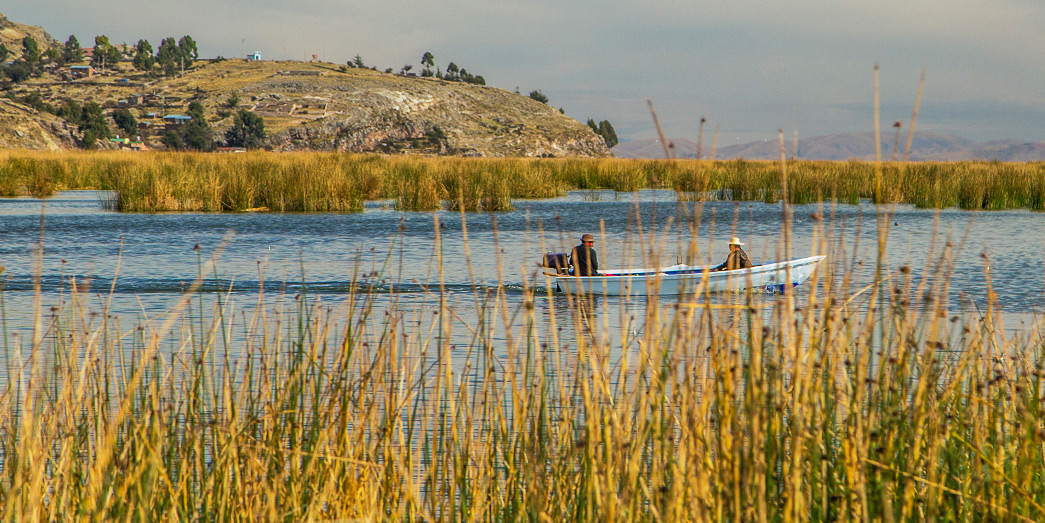
Uros boat sailing in Lake Titicaca, Peru
Sunny days are great, and the dry season stretches from April to November, but keep in mind the elevation, and make sure to use sunblock!
When getting around the city of Puno, it is best to have your hotel or tour provider arrange for a taxi pick-up instead of hailing any which cab on the street. Generally, this is a very useful recommendation for travel throughout much of South America. Reliability, dependability, and peace of mind are worth the extra effort in planning.